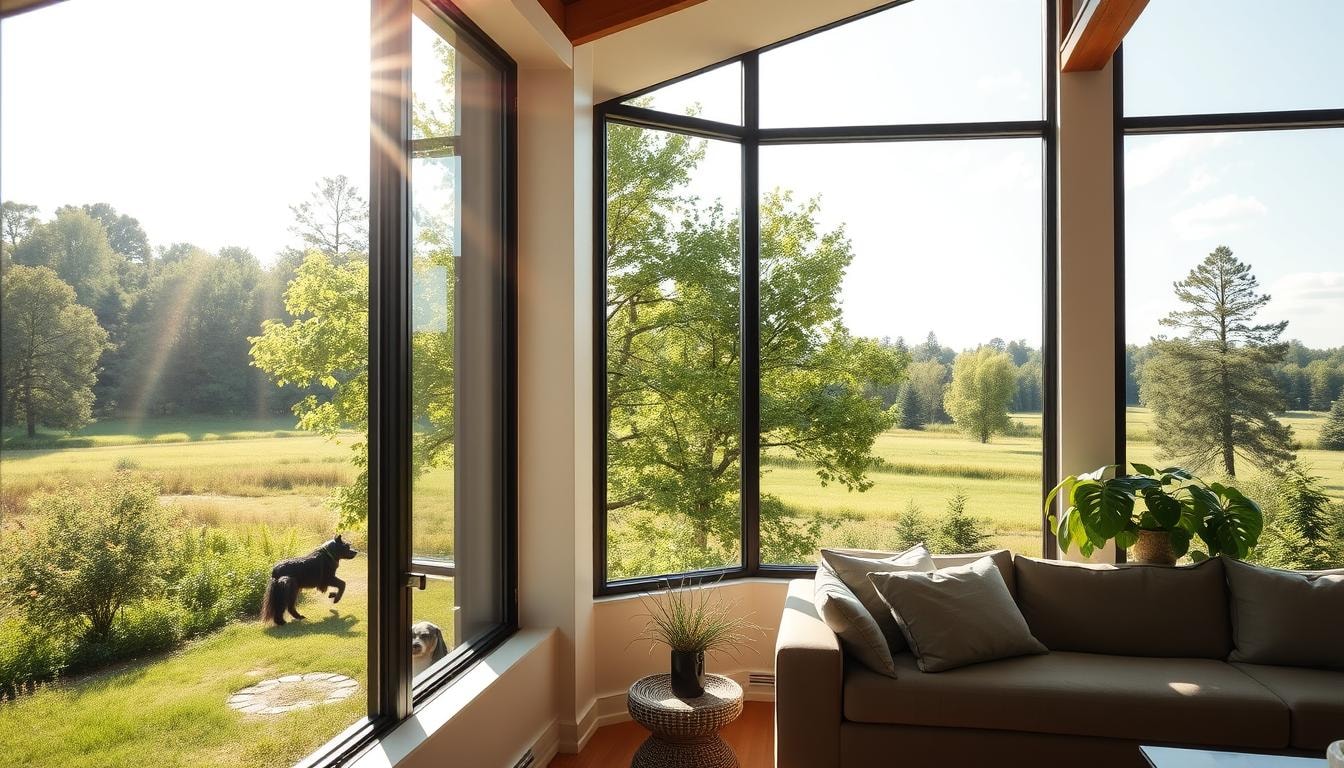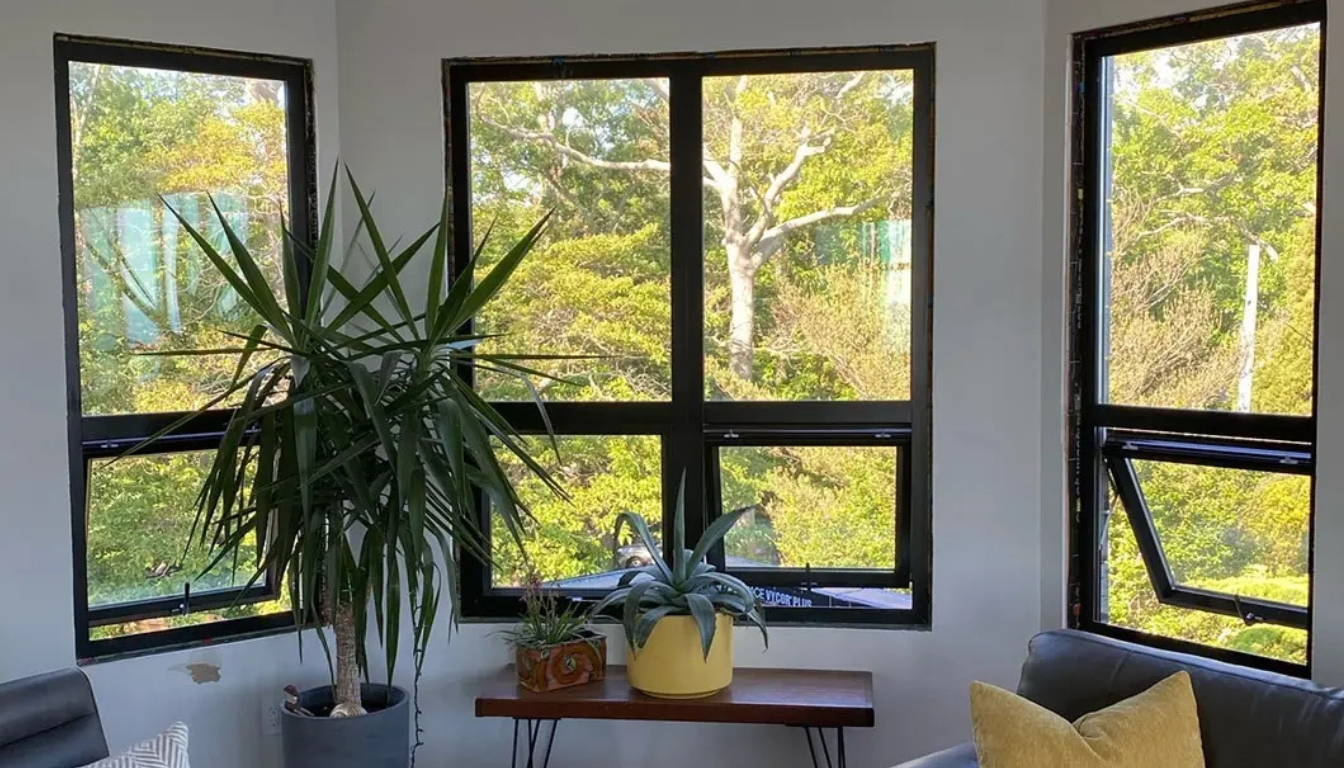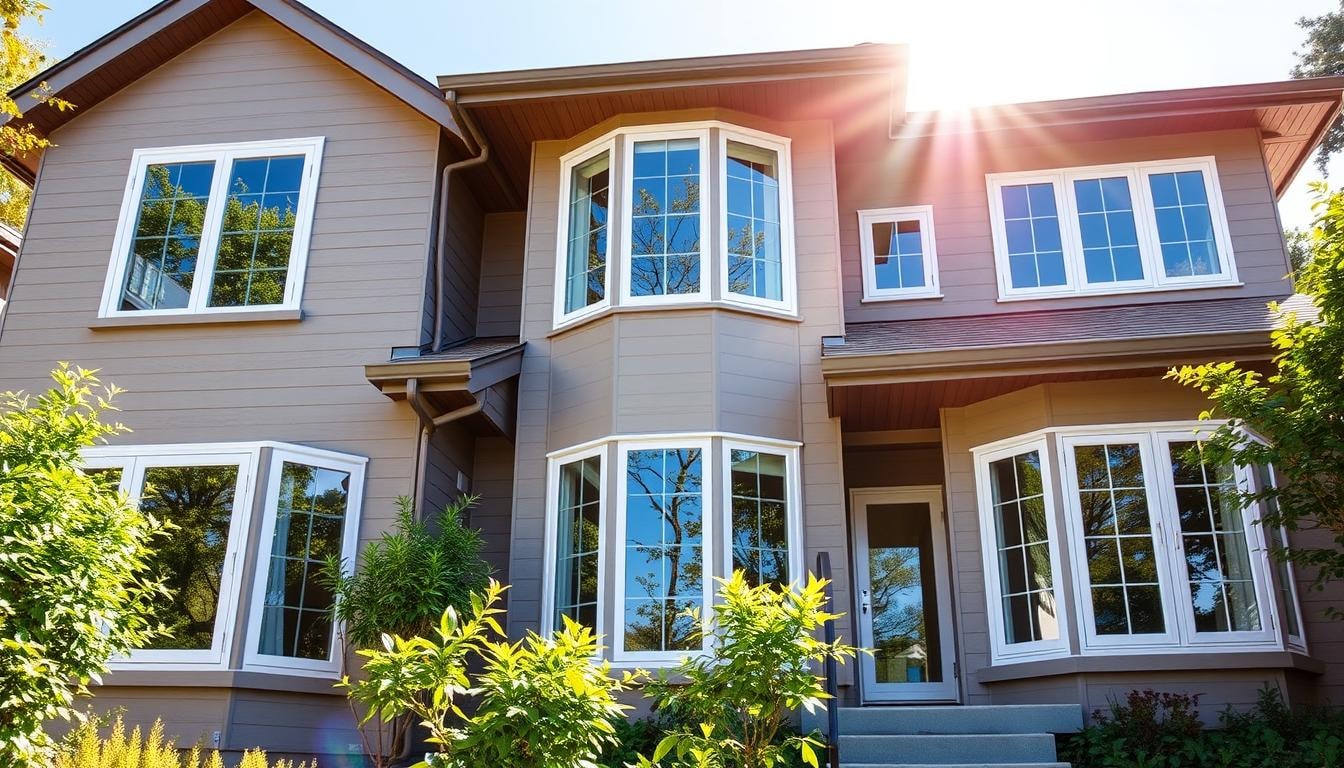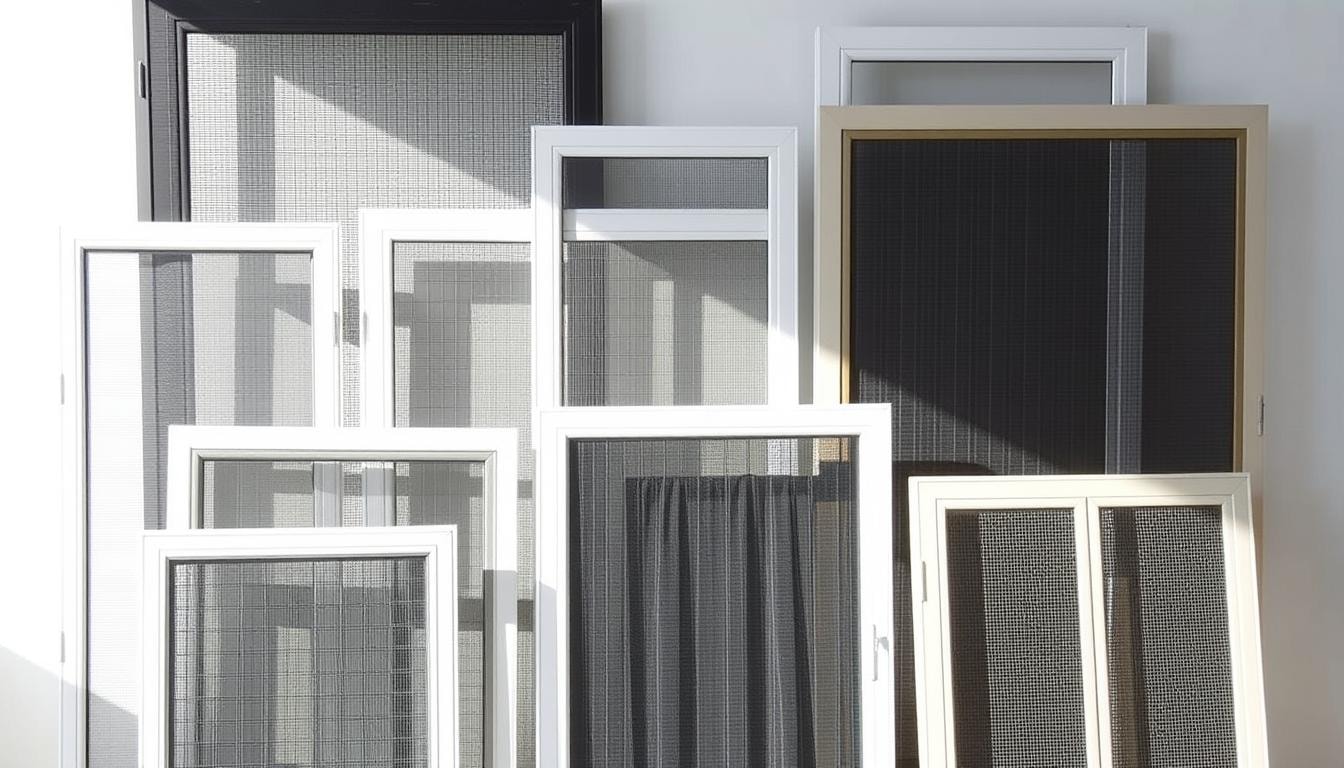
Standard Window Screen Size: A Complete Guide to Window Screen Measurements
Window screens are key for any home. They keep insects out and let in fresh air. But picking the right size can be hard. This guide will cover standard sizes, why measuring right matters, and the options for a perfect fit.
Key Takeaways
- Window screens come in a variety of standard sizes, ranging from 24″ x 36″ to 48″ x 72″
- Accurate measurements are crucial for a snug, gap-free fit of your window screens
- Common mistakes in measuring include not checking for level and forgetting to measure diagonally
- Fiberglass and aluminum are the most popular screen materials, each with their own advantages
- Custom-sized screens are available for non-standard windows, but using a common size can save money
Understanding Window Screen Basics
Window screens keep our homes safe from bugs, pollen, and dust. They come in many materials, each with its own benefits. Knowing about fiberglass, aluminum, and other screens helps us choose the best one for our homes.
Common Screen Materials and Their Uses
Fiberglass screens are loved for their toughness and bug-blocking power. Aluminum screens, however, are great because they don’t rust and stay strong. There are also special screens for solar, pet, and pollen protection, each designed for a specific need.
The Importance of Proper Screen Sizing
Getting the right screen size is crucial for a good fit and function. The wrong size can mess up your windows’ look and let pests in. Knowing the standard sizes helps create a strong barrier against the outside world.
Standard Mesh Configurations
- Fiberglass mesh: A popular, cost-effective option known for its durability and insect-repelling capabilities.
- Aluminum mesh: Offering superior corrosion resistance and structural integrity, aluminum screens are a reliable choice.
- Specialty meshes: Innovative screen materials like solar, pet-resistant, and pollen-blocking options cater to specific needs.
Window screens might seem complicated, but learning about materials, sizes, and types helps us make better choices. This knowledge improves our homes’ comfort and safety.
Standard Window Screen Size and Common Dimensions
Standard sizes for window screens are key for a good fit. Sizes range from 24″ x 36″ to 48″ x 72″. Fiberglass screens are popular and come in sizes from 6″ to 60″ wide and 6″ to 96″ tall.
Aluminum screens are also available. They range from 6″ to 53″ wide and 6″ to 74″ tall. Specialty screens like Ultravue and Solar Insect screens have similar sizes.
For sliding windows, screens are 10″ to 50″ wide and 10″ to 65″ tall. This fits the sliding motion well.
- Fiberglass screens: 6″ to 60″ wide, 6″ to 96″ tall
- Aluminum screens: 6″ to 53″ wide, 6″ to 74″ tall
- Sliding window screens: 10″ to 50″ wide, 10″ to 65″ tall
Knowing the standard window screen size and common dimensions is important. It helps choose the right screen for your windows. This ensures a proper fit.
Types of Window Screens and Their Measurements
There are many types of window screens to choose from. Each has its own size and how to install it. Knowing the right size is key for a good fit and function.
Single and Double Hung Window Screens
Single and double hung windows have screens that fit inside the frame. The single hung window screen sizes are 6″ to 60″ wide and 6″ to 96″ tall. Double hung window screens are similar in size, matching the window’s look well.
Sliding Window Screen Dimensions
Sliding windows need screens that slide along tracks. The usual sliding window screen sizes are 10″ to 50″ wide and 10″ to 65″ tall. Sliding glass doors are 23″ to 36″ wide and 70″ to 85″ tall.
Casement Window Screen Sizes
Casement windows need custom screens because of their unique shape. The screen dimensions for casement windows vary based on the window’s design. You need to measure carefully for a perfect fit.
Getting the right screen size is important for all windows. It keeps bugs out, lets you see, and makes your home look better.
How to Measure Your Window Screens Correctly
Getting your window screen measurements right is key for a good fit and performance. Whether it’s a new screen or a replacement, the right measuring method is crucial.
First, find the width and height of your window screen. For screens already there, measure across the frame. If your window has no screen, measure the frame opening. Remember to include any tracks or lips.
Round your measurements to the nearest 1/16 inch for the best fit. For single-hung windows, measure the height from the top track to the bottom lip. Then, measure the width across the window and subtract 1/16 inch for a snug fit.
Measuring your window screens accurately is important. It prevents bugs from getting in and ensures smooth operation. Taking your time to measure correctly can save you from expensive mistakes when buying new screens.
For irregular window shapes, measure the width at the top, middle, and bottom. Also, measure the height on the left, center, and right. Use the smallest measurements for a tight fit. Regular maintenance, like cleaning and checking for wear, also helps your screens last longer.
Screen Mesh Types and Their Applications
Choosing the right window screen mesh is key. It affects how well they work and last. Fiberglass and aluminum are top picks, each with its own benefits.
Fiberglass vs Aluminum Screens
Fiberglass screens are loved for their toughness and clear view. They’re easy to use and not too pricey. On the other hand, aluminum screens are stronger and don’t rust. They’re great for places with lots of moisture or near the sea.
Specialty Screen Materials
There are special screens too. UltraVue2 screens have a new tech for better seeing. Super Screen is even more durable. No-See-Um screens keep out tiny bugs.
Pet-Resistant Screen Options
Pets can damage screens by scratching and chewing. Pet-resistant screens, like polyester or stainless steel, are much stronger. They last longer and keep pets safe.
Think about where you live, the weather, and your pets when picking a screen. Keeping them clean is also important for their life span.
Custom vs Standard Screen Sizes
Homeowners can pick between standard or custom window screens. Standard screens are easy to find and cheaper. But, custom screens fit perfectly, keeping bugs out and looking great.
Standard screens come in common sizes like 24″ by 36″ or 48″ by 72″. They work well for many homes. But, they might not fit every window perfectly, letting bugs in.
Custom screens, on the other hand, are made just for your windows. They look better and keep bugs out. You can choose from many specialty mesh types to meet your needs.
At Metro Screenworks, we’ve been making custom window screens for over 40 years. Our team ensures a perfect fit every time. We offer many frame colors and mesh types, so you can find the perfect screen for your home.

Choosing between standard and custom screens depends on your home’s needs. Knowing the benefits of each helps you pick the best option. This ensures your windows are protected, look great, and fit perfectly.
Screen Frame Components and Specifications
Window screens rely on the frame for a good fit and lasting use. Aluminum frames, usually 3/4-inch thick, are common. They come in colors like black, white, and bronze, making it easy to match your home.
Frame Materials and Durability
Frame durability depends on the materials and the weather. Aluminum frames resist rust and damage well. Fiberglass screens are light, flexible, and affordable.
Pet-resistant screens, like PetScreen®, are strong for homes with pets. They are seven times stronger than regular screens.
Spline Sizes and Installation
The spline secures the screen mesh in the frame. It comes in different sizes for various frames and screens. Vinyl spline is easy to use, while foam spline fits larger screens better.
When fixing a screen, measure the frame groove first. This ensures the right spline size. Proper installation keeps the screen mesh tight in the frame.
Window Screen Installation and Maintenance
Installing and keeping your window screens in good shape is important. It makes them last longer and work better. You can put in new screens or replace old ones by yourself.
How you install screens depends on your window type. Most screens are easy to put in yourself. You’ll need tools like scissors, a utility knife, and a spline roller. The cost of a screen replacement kit varies based on size and material quality.
Keeping your screens clean and in good condition is key. Use mild soap and water to clean them. Check for tears or damage and make sure they’re tight. Screens with Water Shed Technology keep water and dirt away, staying cleaner longer.
- Proper screen installation and maintenance can extend the life of your window screens.
- The diameter of the spline commonly used for window screens is around 0.157 inches.
- Replacing the entire window screen is often quicker and more effective than patching small tears.
- Common window frame materials include wood, aluminum, and plastic, each requiring slightly different installation methods.
By following best practices for screen installation and maintenance, you can keep your windows safe and looking great. Whether you’re cleaning window screens, installing window screens, or screen replacement, doing it right is worth it in the long run.
Special Considerations for Different Window Types
Not all windows are the same when it comes to screens. Each type has its own needs for a good fit and function. Knowing what each window type needs is key for a successful screen job.
Bay Window Screen Requirements
Bay windows have a special shape that needs custom screens. These screens must be carefully made to fit perfectly. If they don’t fit right, they won’t work well or look good.
Picture Window Screening Options
Picture windows are big and need strong screens to stay in shape. They also need special materials and frames for the best look and function.
Screen Door Measurements
Screen doors keep bugs out and let air in. They usually come in sizes from 23″ to 36″ wide and 70″ to 85″ tall. Getting the size right is important for a good seal and function.
There are also custom screens for special shapes like circle and arch windows. Each shape has its own needs for a proper fit and best performance.
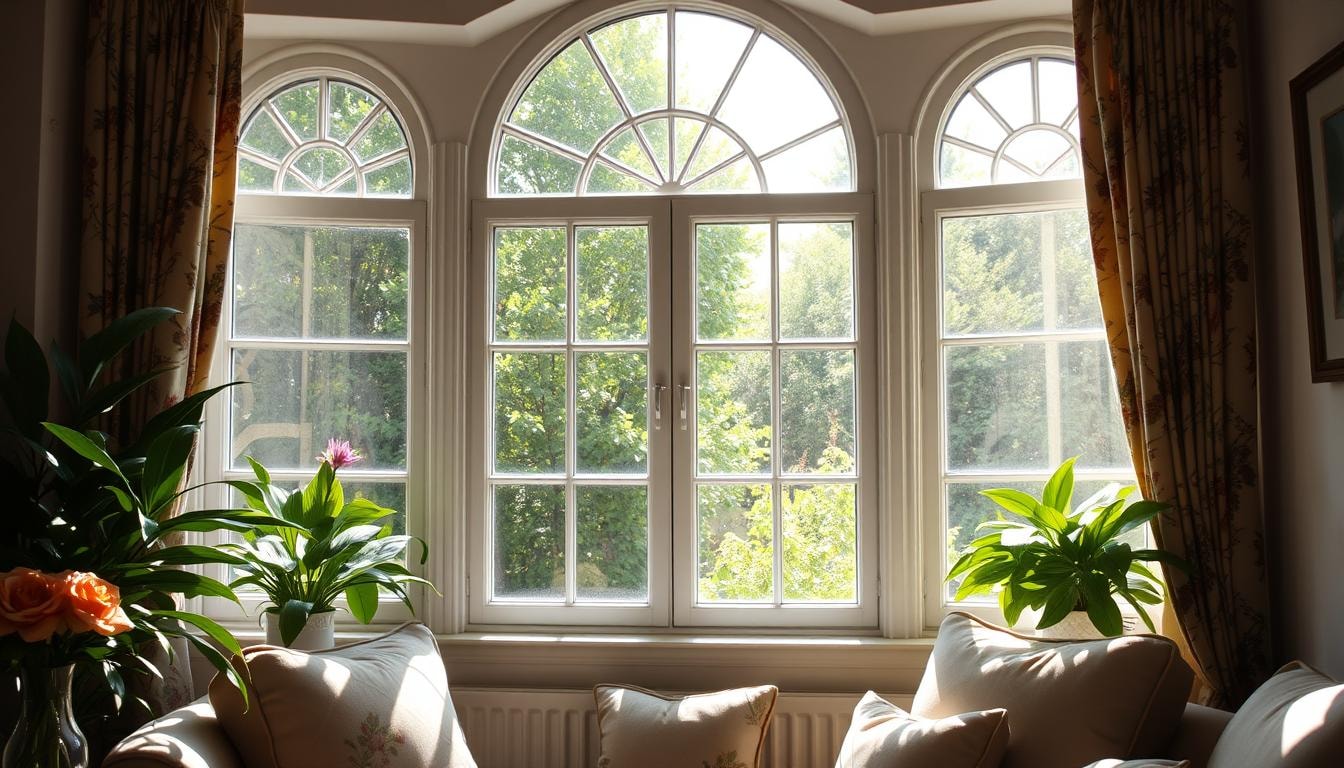
Get the Perfect Fit for Your Windows with Budget Windows
At Budget Windows, we understand the importance of getting the right window screen size and material for your home. Whether you’re measuring for a new window screen or replacing an existing one, our experts can guide you through the process.
From understanding standard window screen frame sizes to helping you choose the ideal screen material like fiberglass, aluminum, or specialized options like solar screens and pet screens, we’ve got you covered. Our team will ensure you get the perfect fit, no matter the window size or shape, using the right measuring technique and hardware.
Don’t settle for a subpar fit that lets in tiny insects or compromises your outward visibility. Contact Budget Windows today and let our experts help you find the ideal window screen solution for your home. We’ll address all your questions and guide you through the installation process for a seamless experience.
Conclusion
Getting the right window screen measurements is key. It helps keep bugs out, saves energy, and keeps your home looking good. Knowing about screen materials, how to measure, and how to install is important.
Choosing the right screen sizes or custom-made screens starts with accurate measurements. The right material is also crucial. This way, your window screens will last long and work well.
By taking care of your window screens, they’ll last longer. This means better insect protection and energy savings. With the right care, your window screens will add to your home’s comfort and look.
FAQs
What are the standard window screen sizes?
Window screens come in a variety of standard sizes, ranging from 24″ x 36″ to 48″ x 72″.
Why is accurate measurement important when measuring for window screens?
Accurate measurements are crucial for a snug, gap-free fit of your window screens to keep out insects and maintain outward visibility.
What are the common mistakes people make when measuring window screens?
Common mistakes include not checking for level and forgetting to measure diagonally, which can lead to an improper fit.
What are the main types of screen materials and their advantages?
Fiberglass and aluminum are the most popular screen materials, with fiberglass known for its toughness and aluminum for its corrosion resistance.
When should I consider a custom-sized screen versus a standard size?
Custom-sized screens are available for non-standard windows, but using a common size can save money if it fits your window properly.





